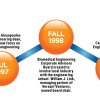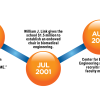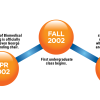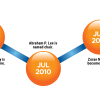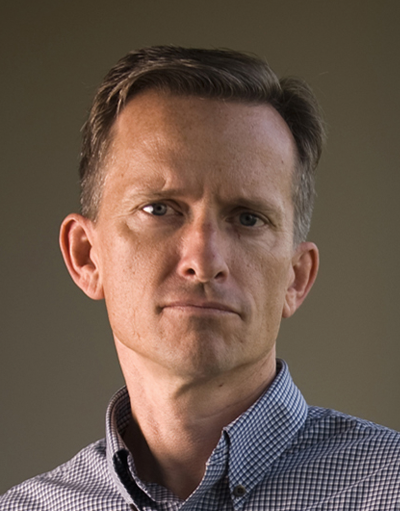
Oct. 27, 2022 - UCI’s Department of Biomedical Engineering was born on the basketball court. Between dribbles and dunks, the vision of creating a new department, where engineering would merge with medicine and biological sciences for the betterment of human health, began to take shape.
In 1995, avid basketball fans Steven George, then chemical and biochemical engineering and materials science assistant professor, and Bruce Tromberg, then electrical and computer engineering associate professor, met on Sundays at the newly constructed University Hills basketball court for a regular pickup game with other faculty, postdocs, graduate students and occasionally the men’s head basketball coach.
“We chatted in between games about our families, Irvine and also our research programs,” says George. “It quickly became clear that the Beckman Laser Institute (and Medical Clinic), where Bruce’s lab was located, was the focal point for biomedical research on campus. Bruce mentioned there were several medical and doctoral students pursuing their thesis work at the BLI, but there was not an adequate home for the engineering-oriented students. Most of these students chose biophysics/physics or electrical engineering. He thought there might be an opportunity to develop a biomedical engineering program on campus.”
George told Tromberg about the Whitaker Foundation. “This foundation was investing heavily to establish biomedical engineering as a rigorous academic discipline in the form of grants to develop formal academic programs and departments, as well as ‘new/young’ investigator grants,” explains George, whose first extramural grant was from the Whitaker Foundation.
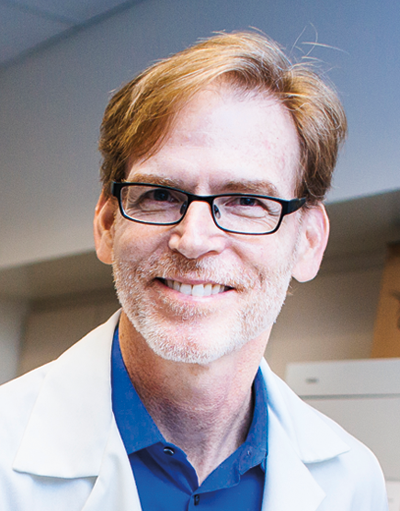
These early conversations at the basketball court occurred around 1995-96. “Without this beautiful new court, we may not have been able to retain Steve George, probably one of UCI’s most impactful ‘basketball plus leadership’ recruits of all time,” says Tromberg, who had come to the BLI as a postdoc in 1988. “BLI urgently needed a main campus partner to expand biophotonics as an academic discipline. Biophotonics and biomedical optics were growing exponentially around the world, driven by remarkable technologic advances and robust commercialization of medical lasers, phototherapies, optical coherence tomography (OCT), laser microscopies/microbeams and endoscopies/minimally invasive surgeries; all core areas pioneered by the BLI. This was vital for attracting and retaining students and faculty. Establishing a BME department was a perfect opportunity, but creating it from scratch required substantial investment.”
Enter Nicolaos “Nick” Alexopoulos, who arrived in summer 1997. He had left UCLA to join UCI as engineering dean and professor of electrical engineering and computer science, and he was integral in launching the BME department.
For Alexopoulos, the motivation was deeply personal. “I had an older and brilliant brother who was an engineer,” he says. “I became an engineer because of him. Unfortunately, he got eye melanoma and lost his eye. Within a year, there was a metastasis in his liver. I recall a visit to a doctor where my brother was told that he just worried too much. Yet the cancer was growing fast. When the doctor finally accepted the fact the tumor was inoperable, it had to be reduced in size. The only way to do it back then was with high levels of heat. So, my brother participated in an experiment, but the technology was too primitive and painful at the time. He did not survive it. This experience reinforced my goal to help educate doctor/engineers and doctor/scientists.”
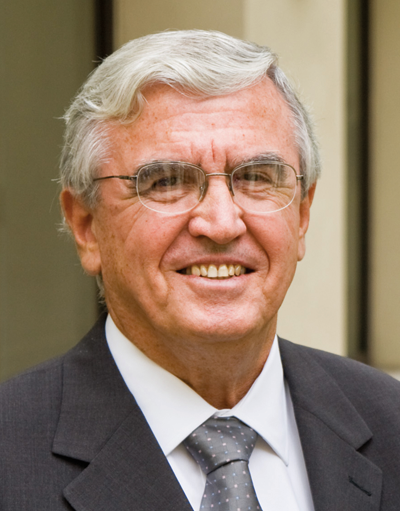
Driven by the loss of his brother, Alexopoulos envisioned forming a BME department, “I immediately started the process, but the school was small and some faculty opposed it because they needed resources to grow their own departments. Nevertheless, I proceeded slowly and got the agreement and help from the dean of the medical school at that time, Dr. Tom Cesario, and colleagues at the Beckman Laser Institute.”
George says, “In 1997, there were only four departments and approximately 60 faculty, but the economy was starting to pick up and there were significant growth opportunities on the entire campus, including the school of engineering. During the 1997-98 academic year, I approached Nick about the Whitaker Foundation, and the opportunities they presented for establishing biomedical engineering programs/departments.
“I distinctly remember telling him, ‘I think we can be competitive for their smaller award – the Special Opportunity Award’ (approximately $1 million over three years). Nick did not hesitate: ‘Steve, what is their biggest award, and what would it take to get it?’ That changed my entire thinking about what might be possible. I said, ‘Well, there is the Development Award, but that award has only been given to a small number of campuses willing to invest like six to 10 new faculty lines and commit to forming a department.’ He said, ‘Let’s do it.’”
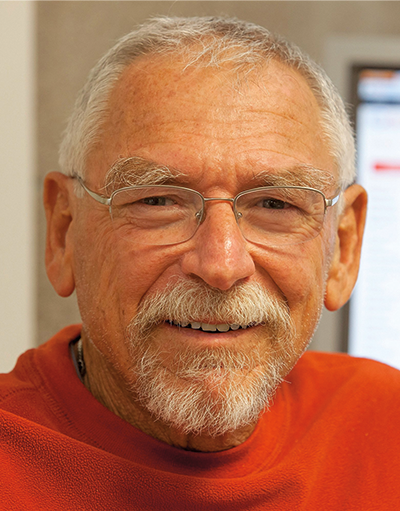
George and Alexopoulos were concerned about a junior faculty member leading the project and decided the BLI would need to play a guiding role. Tromberg introduced George to BLI Director Michael Berns. “Michael was keen on the idea and had the leadership skills to be the principal investigator on the application,” recalls George. “The problem was that he was not an engineer by training and really knew nothing about planning an undergraduate program in BME – a requirement of the Development Award. Michael and Bruce developed the research focus areas (photonics, computation and microfabrication/MEMS), and I developed the undergraduate and graduate programs. Nick committed something like six to eight new faculty lines and space in the school of engineering. We also cobbled together an early External Advisory Board that included William J. Link.”
In 1998, the Whitaker Foundation granted a $3-million Development Award to form the Center for Biomedical Engineering. “I am pretty sure we shocked the BME world at the time,” says George. “We were clearly the least ‘developed’ program that had ever received the Development Award, and our success was due to a combination of many features. But I think future potential, including the local biomedical device sector in Orange County, played a major role.”
Alexopoulos was also drawn to the immense potential of Orange County’s biomedical field. “Orange County was like a Silicon Valley but for biomedical technology companies,” he says. “I visited just about all of them (big and small) and asked them for their help and participation. They helped create the department by talking to the chancellor and administration, and by giving money to UCI and the school of engineering. Their support was also critical.”
One of the early industry supporters was Link and his wife, Marsha, who later donated $1.5 million to establish the William J. Link Endowed Chair in Biomedical Engineering in 2001. Link is a successful medical device entrepreneur and venture capitalist, whose companies have included Chiron Vision, American Medical Optics and Versant Ventures. “When I look through my engineering rose-colored glasses at recent medical advances, I see talented engineers who have discovered unique solutions for health problems,” said Link in 2002. “Marsha and I thought, ‘What better way to help than to contribute to a university we’re fond of and a field that we’ve benefited from immensely?’ It’s helped us do well and do good.”
“In the first year (1999), we recruited several new faculty and began the long process of establishing a new department and new undergraduate program,” recalls George. “Progress was good, but about halfway through the first year, Michael Berns had a recurrence of an illness that would not allow him to continue to lead the program.” With the support of Alexopoulos and Tromberg, George became the new principal investigator and eventually the founding chair, serving from 2002 to 2009.
In 2000, the BME graduate program launched. In 2002, the Center for Biomedical Engineering officially transformed into the Department of Biomedical Engineering, including two undergraduate degree programs and an expanded graduate program offering master’s degrees and doctorates.
“By the end of the Development Award in 2004, we had a critical mass of new faculty (six to eight), and the only existing faculty who moved to the new department were myself (50%), Bruce (50%), and Michael (50%),” says George.
William “Bill” Tang joined the faculty in 2002 and served as acting department chair from 2005 to 2006 and again from 2009 to 2010. He was also the school’s first associate dean for research from 2008 to 2013. Tang recalls: “My fondest memories are always the precious moments in the annual department retreats. We not only talked about the reviews and future plans of the department, but also took some time to promote friendship among the faculty. There was one time when quite a few of us brought our musical talents to entertain everyone. One of us actually played regularly in a local establishment. That must be my fondest memory of the department.”
Looking forward, Tang says, “I hope the department continues to excel in all that we do – research, teaching and service. I also hope that at the same time, we continue to grow in our diversity and collegial relationships.”
Part of the growing diversity was the arrival of Michelle Khine, BME’s first female faculty member in 2009. She was drawn to “the stellar microfabrication/ microfluidics folks here.” Khine says, “It was amazing how many leaders in the field were at UCI. Plus, the weather here sure beats the other places I was considering.”
Her experience turned into more than just fair-weather friends. “I was overwhelmed by how supportive and great this department is,” says Khine. “Enrico Gratton graciously opened his lab up to me and my students – so before my lab was even set up, we had published a paper together. Everyone was so great and collaborative that they quickly became a second family to me. In fact, the Elliots (Hui and Botvinick) are like brothers to me. Elliot Botvinick officiated both my wedding and my mom’s funeral. I’ve always felt appreciated, heard, supported and respected (which is not typical of my experience being a woman engineer!). This department is very special with amazing people. Now, I am so proud of the women we’ve recruited over the years.”
In 2002, Abraham “Abe” Lee was recruited for the newly established California Institute for Telecommunications and Information Technology (CALIT2). When he arrived, he was offered the choice of which engineering department to join. “At the time, there was a Center for Biomedical Engineering but no department,” he recalls. “I jumped at the opportunity, knowing that a department would be started soon.”
Lee served as department chair from 2010 to 2019. He notes, “The early days were precious in the sense of a having a mission to build something special. BME at UCI essentially started from scratch, and we were able to put our stamp on what type of department we were building and what type of impact we were envisioning. This sense of the collective sum being much greater than the individual parts was empowering and enthralling, motivating us to do what was best for developing the overall department and not just be concerned with one’s own career. It was a once-in-a-lifetime opportunity.
“We also sensed the community’s support, especially coming from the stakeholders in the BME industry who were cheering us on to succeed. The students were also proud to be the first graduates of this nascent department, and many are now leaders in different sectors of the BME ecosystem (research, corporate, healthcare). Over the years, we could start to see the fruits of our endeavors, as BME at UCI is not just a novelty and curiosity, but a recognized and established program that is among the best in the nation.”
Although the basketball court was the seeding ground, the Whitaker Development Award was the overwhelming force that drove department formation forward, according to Tromberg. “What Whitaker did uniquely was create a culture that inspired our senior campus leaders who embraced the BME opportunity at a critical moment early in their UCI careers. They responded to the high level of expectations set by Whitaker leadership during multiple site visits. This had a huge and lasting impact that energized our faculty, students, administration and the Orange County region. Twenty years later, this legacy carries on with a remarkable return on investment for UCI and the national BME community.”
Today, the UCI BME department has evolved with 33 faculty, dozens of professional researchers, 136 graduate students and over 500 undergraduates. The focus areas for the master’s degree and doctoral programs include three technology areas of biomedical photonics/optoelectronics, biomedical nano- and microscale systems/fabrication, and biomedical computation/modeling. BME faculty garner extramural grants with expenditures topping $30 million annually.
“The UCI BME’s mission statement is Inspiring Engineering Minds to Advance Human Health,” says Lee. “I hope UCI BME never loses sight of what it set out to be, a department that focuses on the human aspect, to educate engineers who want to use their skills to better their fellow human beings. We built BME based on a community effort, and we should continue to serve the community that made it possible. The humble beginnings beg for a humble attitude toward the success and acclaim that we are garnering.”
– Tonya Becerra

